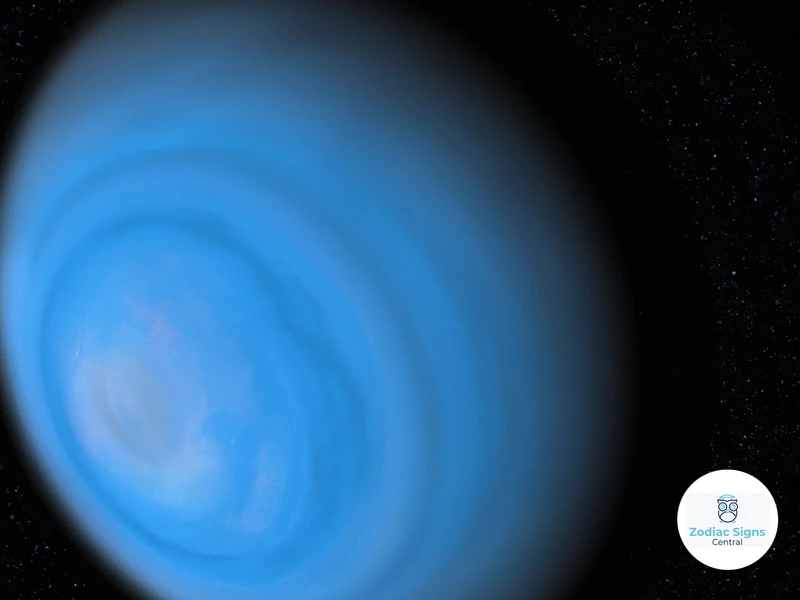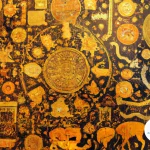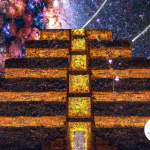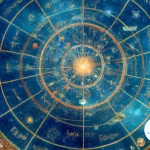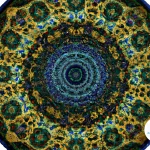Uranus, the seventh planet in our solar system, has long captivated the imaginations of scientists and astronomers alike. With its distinctive bluish-green hue and its mysterious sideways rotation, Uranus has remained an enigmatic celestial body throughout history. In this article, we delve into the history and discovery of Uranus, tracing back to ancient observations and assumptions, exploring the breakthroughs of modern astronomy that led to its identification, and uncovering the fascinating features that make Uranus truly unique. Join us on a journey through space and time as we unravel the secrets of this intriguing planet and look towards future exploration.
The Birth of Uranus

Ancient civilizations, such as the Babylonians and Egyptians, observed and recorded celestial bodies in the night sky, including the planets visible to the naked eye. However, due to its dimness and slow movement, Uranus went unnoticed by these early astronomers. In fact, it wasn’t until the invention of the telescope that Uranus would reveal itself to the world.
The 17th and 18th centuries witnessed a revolution in astronomy as advancements in telescope technology allowed scientists to observe the heavens with greater accuracy. Astronomers such as Galileo Galilei and Johannes Kepler made significant contributions to our understanding of the solar system. However, the discovery of Uranus would require the work of a curious and determined astronomer named William Herschel.
1. Ancient Observations and Assumptions
In ancient times, scholars and philosophers gazed up at the night sky, trying to make sense of the celestial bodies they saw. While they were able to identify and track the movements of some planets like Mars and Venus, Uranus remained hidden from their view. The ancient observations and assumptions about the universe shaped their understanding of the cosmos. One prevailing assumption was that the Earth was at the center of the universe, and all other planets revolved around it. This geocentric model, proposed by Ptolemy, influenced early astronomers’ understanding of celestial motion. However, as these early astronomers made detailed observations of the night sky, they began to question the simplicity of the geocentric model. This led to the development of the heliocentric model, later championed by Nicolaus Copernicus, which suggested that the Sun was at the center of the solar system. These foundational assumptions and observations laid the groundwork for future astronomers to continue exploring and unraveling the mysteries of the cosmos.
2. The Modern Revolution in Astronomy
During the 17th and 18th centuries, a modern revolution in astronomy took place. Astronomers began to utilize advanced instruments such as the telescope to peer into the depths of the cosmos. One of the key figures in this revolution was William Herschel, whose pioneering work laid the foundation for the discovery of Uranus. Herschel’s telescopic observations allowed him to observe the heavens in unprecedented detail, leading to groundbreaking discoveries. His meticulous observations and dedication to astronomical research played a crucial role in unraveling the mysteries of the solar system. Thanks to Herschel and other astronomers of the time, our understanding of the universe expanded significantly, paving the way for future explorations and discoveries. The modern revolution in astronomy marked a turning point in our quest to comprehend the vastness of the cosmos.
The Discovery of Uranus
The discovery of Uranus was a monumental moment in the history of astronomy. In the late 18th century, astronomers faced a predicament – the orbits of known planets did not conform to the predictions of Newtonian physics. German-born British astronomer William Herschel dedicated countless hours observing the night sky in search of answers. On March 13, 1781, while scanning the heavens with his homemade telescope, Herschel observed a dim object that appeared to be a comet. However, further observations and calculations led Herschel to the realization that he had actually discovered a new planet. This groundbreaking observation challenged the existing understanding of the solar system and marked the first discovery of a planet in modern history. Herschel initially named the planet “Georgium Sidus” after King George III, but it later came to be known as Uranus, in accordance with the tradition of naming planets after Roman mythology. The discovery of Uranus opened up a new chapter in our understanding of the universe and paved the way for further explorations and discoveries in the field of astronomy.
1. The Uranus Predicament
The Uranus predicament refers to the puzzling observations made by astronomers regarding the trajectory of Uranus. In the late 18th century, astronomers noticed that Uranus did not follow the expected path predicted by Newton’s laws of motion. Instead, it exhibited irregularities in its orbit that couldn’t be explained by the gravitational interactions with the known planets. This discrepancy led astronomers to suspect the presence of an undiscovered planet that was perturbing Uranus’s path. However, identifying and locating this hypothetical planet proved to be a daunting task. To track Uranus’s position accurately, astronomers relied on a wide range of observations collected throughout the years, meticulously plotting its movements against the backdrop of distant stars. Yet, despite their efforts, the search for the mysterious planet remained inconclusive. It was up to one astronomer, William Herschel, to revolutionize our understanding of the solar system and solve the Uranus predicament.
2. William Herschel’s Groundbreaking Observation
William Herschel, a British astronomer, played a pivotal role in the discovery of Uranus. On the night of March 13, 1781, Herschel was diligently observing the night sky with his homemade telescope in Bath, England. While scanning the heavens, he stumbled upon a celestial object that appeared to be a faint star. Intrigued by its peculiar movement, Herschel tracked its path over several nights and realized that it was not a star, but a previously unknown planet. This groundbreaking observation challenged the traditional view of the solar system and launched Uranus into the realm of scientific discovery. Herschel painstakingly documented his observations and presented his findings to the Royal Society, earning him recognition as the discoverer of Uranus. His discovery not only expanded our understanding of the solar system but also propelled the field of astronomy forward, inspiring countless scientists to explore the vast wonders of the universe.
3. Naming the Seventh Planet
Naming the seventh planet proved to be an intriguing challenge for astronomers. Initially, William Herschel suggested the name “Georgium Sidus” in honor of King George III of England, who Herschel served as court astronomer. However, this name was met with resistance from astronomers in other countries who felt it was too nationalistic. Eventually, the name “Uranus” was proposed by German astronomer Johann Bode. Uranus was chosen based on the tradition of naming planets after ancient Greek and Roman deities. In Greek mythology, Uranus was the god of the sky and the father of Saturn (Cronus). This name was eventually adopted by the scientific community and remains the official name of the seventh planet to this day. The naming of Uranus not only solidified its place in the solar system, but it also highlighted the significance of mythology in the field of astronomy.
Uranus in Astrology
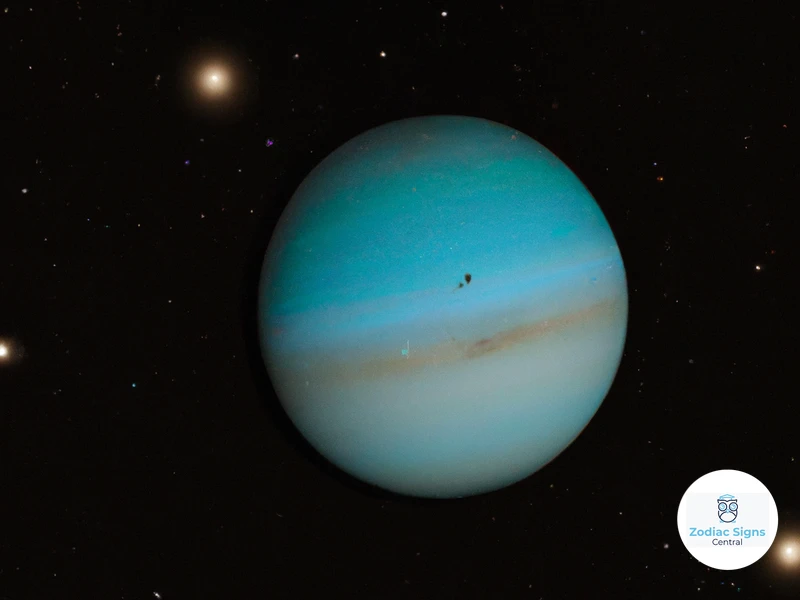
In astrology, Uranus is known as the ruler of Aquarius, the eleventh sign of the zodiac. Symbolizing innovation, inspiration, and rebellion, Uranus represents the unconventional and progressive aspects of our lives. Its energy is associated with individuality, freedom, and breaking free from established norms. In astrology charts, the placement of Uranus can indicate how individuals express their uniqueness and approach change and revolution. The influence of Uranus can be disruptive yet transformative, challenging traditional structures and pushing for liberation and societal change. Its presence in a birth chart can signify a person’s inclination towards innovation, originality, and the pursuit of individual freedom. Those influenced by Uranus may possess a rebellious spirit and a desire to challenge societal expectations and boundaries. Astrologers consider the position and aspects of Uranus in a chart to analyze its impact and significance in one’s life. Understanding the role of Uranus in astrology provides insights into the dynamic interplay between individuality, progress, and revolution within the cosmic tapestry of the zodiac.
1. Uranus as the Ruler of Aquarius
- Uranus, the seventh planet from the Sun, has been associated with the zodiac sign Aquarius in astrology.
- In astrology, each planet is believed to rule over a particular zodiac sign, influencing the characteristics and traits associated with that sign.
- Aquarius, an air sign known for its independent and innovative nature, is aligned with the energy of Uranus.
- Uranus is often regarded as the planet of rebellion, freedom, and revolution, mirroring the progressive and forward-thinking qualities of Aquarius.
- Individuals born under the sign of Aquarius are said to possess the Uranian influence, making them inventive, unconventional, and inclined towards originality.
- Uranus’s association with Aquarius highlights the importance of individuality, humanitarianism, and breaking free from societal norms.
Explore the impact of rising signs on compatibility and relationship dynamics
2. Uranus: The Planet of Innovation and Rebellion
Uranus, known as the planet of innovation and rebellion, holds a significant place in astrology. In astrology, Uranus is associated with the zodiac sign Aquarius, which it rules. Aquarius is known for its progressive and unconventional nature, and Uranus reflects these characteristics in its astrological influence. People born with a strong Uranus placement in their birth charts are often seen as visionaries, inventors, and trailblazers. They possess a unique ability to think outside the box, challenging societal norms and striving for groundbreaking ideas. Uranus encourages individuals to embrace change, seek freedom, and break free from limitations. It symbolizes the need for revolution and transformation, pushing society to evolve and embrace new ways of thinking. The energy of Uranus is electric and unpredictable, sparking flashes of brilliance and inspiring individuals to express their true selves. Its influence can be disruptive but also liberating, pushing us to question authority and societal structures in order to bring about positive change. Uranus encourages us to chart our own course, even if it means going against the grain. Its energy resonates with those seeking to explore new frontiers and challenge the status quo. So, embrace the energy of Uranus and let it inspire you to embrace your own unique path of innovation and rebellion exploring incompatible zodiac signs.
The Striking Features of Uranus
Uranus, with its icy blue-green color, holds several striking features that set it apart from the other planets in our solar system. One of the most peculiar aspects of Uranus is its sideways rotation. Unlike most planets that spin on an axis perpendicular to their orbit, Uranus is tilted at a nearly 90-degree angle, causing it to appear as though it is rolling on its side. This unique tilt has significant consequences for Uranus, leading to extreme seasons that can last for decades. The planet’s magnetic field is also distinctive, being tilted and offset from its center. This unusual magnetic field is likely the result of the planet’s lopsided rotation. Uranus is known for its system of rings, although they are not as prominent or well-known as Saturn’s. The rings of Uranus are dark and narrow, made up of small particles that may have originated from the collisions of moons or other celestial objects. Exploring these striking features of Uranus continues to fascinate scientists as they strive to unravel the mysteries of this captivating planet.
1. The Sideways Spinner
One of the most intriguing features of Uranus is its unique sideways rotation. Unlike the other planets in our solar system which spin on an axis that is roughly perpendicular to their orbital paths around the Sun, Uranus seems to be tilted on its side. This means that instead of spinning upright, Uranus appears to roll around the Sun like a giant celestial ball.
This distinctive tilt is believed to be the result of a significant impact early in the planet’s history. Scientists hypothesize that a collision with a large celestial object caused Uranus to become tilted, leading to its strange rotational behavior. The impact may have also disrupted the formation of a solid core in Uranus, contributing to its predominantly gaseous composition.
The sideways rotation of Uranus has important consequences for its climate and weather patterns. As the planet orbits the Sun, different parts of its surface experience long periods of daylight or darkness, causing extreme variations in temperature and atmospheric conditions. This unique axial tilt also gives rise to Uranus’ distinct seasons, with each pole experiencing more than 20 years of continuous sunlight followed by an equal period of darkness.
The exact cause of Uranus’ unusual tilt remains something of a mystery, and scientists continue to study the planet to gain a deeper understanding of its origins and dynamics. The sideways spinner is a fascinating characteristic that sets Uranus apart from the other planets in our solar system and highlights the complexity and diversity of celestial bodies.
Learn more about the impact of celestial bodies on astrological compatibility in relationships: North Node Karmic Compatibility.
2. The Unique Magnetic Field
The planet Uranus possesses a truly remarkable and puzzling feature – its unique magnetic field. Unlike most other planets in our solar system, Uranus has its magnetic field tilted at a significant angle. While the magnetic fields of other planets are typically aligned with their axes of rotation, Uranus defies this convention by having a tilt of approximately 60 degrees. This means that the planet’s magnetic poles are almost in line with its equator, leading to a magnetic field that appears to emerge from somewhere near its center. The precise mechanism responsible for this unusual magnetic field remains uncertain. One theory suggests that Uranus’ magnetic field is generated through a process called “dynamo action” within its icy shell. Another possibility is that the tilt is a result of a cataclysmic collision with a massive object in the planet’s history. Further research and exploration will be necessary to unravel the full mysteries of Uranus’ unique magnetic field.
Key Points:
- Uranus possesses a uniquely tilted magnetic field.
- The magnetic field is tilted at an angle of approximately 60 degrees.
- This differs from the typical alignment seen in other planets.
- The exact cause of Uranus’ unusual magnetism is still uncertain.
3. The Mysterious Rings of Uranus
The planet Uranus is not only known for its unique sideways rotation and distinctive color, but also for its fascinating ring system. Although less prominent than the rings of Saturn, the rings of Uranus remain a subject of intrigue and study. Discovered in 1977 during observations made from Earth, they consist of 13 main rings, named in the order of their discovery: 1986U2R, 6, 5, 4, Alpha, Beta, Eta, Gamma, Delta, Lambda, Epsilon, Nu, and Mu. These rings are composed of a variety of materials, including dust, ice, and rocks. The most prominent ring, known as the Epsilon ring, is thick and broad, while others are much narrower and fainter. What makes these rings particularly mysterious is their blackness. Unlike the bright and visible rings of Saturn, the rings of Uranus appear dark, reflecting very little light. This uniqueness has led scientists to speculate about the composition and origin of these enigmatic rings. Some theories suggest that the rings of Uranus may be formed from debris left over from past collisions between moons or may even be remnants of a shattered moon. Further exploration and study of these rings will hopefully provide more insights into their formation and composition, unlocking the secrets of Uranus’ captivating ring system.
Sources:
source1
source2
source3
Exploration of Uranus
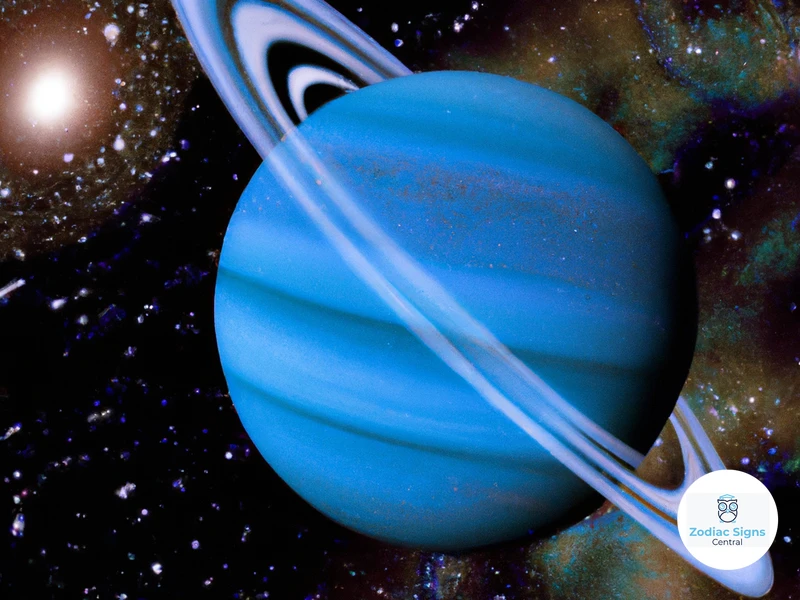
Despite its distant location in our solar system, Uranus has not been left unexplored by scientific missions. Let us delve into the various missions that have provided us with valuable insights into this captivating planet.
In 1986, NASA’s Voyager 2 spacecraft made a historic flyby of Uranus, becoming the first and only spacecraft to visit this intriguing planet. During its close encounter, Voyager 2 captured detailed images of Uranus, revealing its cloud patterns, atmosphere, and moons. The data gathered during this mission shed light on the composition and structure of Uranus, giving scientists a deeper understanding of this distant world.
While Voyager 2 provided valuable information, it was a brief encounter that left numerous questions unanswered. Scientists and space agencies are now planning future missions to further explore Uranus. One such mission under consideration is an Uranus Orbiter and Probe mission, which would involve sending a spacecraft to orbit Uranus and deploying a probe to gather data from its atmosphere and surface. This ambitious mission aims to uncover more secrets about Uranus, including its internal structure, weather patterns, and potentially even signs of life. Although in the planning stages, such a mission would greatly contribute to our understanding of this enigmatic planet.
Uranus, with its unique features and mysteries, continues to captivate the interest of scientists and space exploration endeavors. The exploration of this distant world is far from over, and with future missions, we can expect to uncover even more about the history, composition, and characteristics of Uranus.
1. The Voyager Missions
The Voyager Missions, specifically Voyager 2, provided the first close-up images and detailed information about Uranus. Launched by NASA in 1977, Voyager 2 embarked on an extensive exploration of the outer solar system. In January 1986, the spacecraft made its closest approach to Uranus, capturing valuable data and breathtaking images of the planet and its moons.
During its flyby, Voyager 2 discovered ten new moons orbiting Uranus, bringing the total known moons to 15 at the time. The spacecraft also revealed that Uranus has a complex system of rings, consisting of at least 13 distinct rings. Additionally, Voyager 2’s observations confirmed that Uranus has a predominately hydrogen and helium atmosphere, with traces of methane giving it its characteristic blue-green color.
The mission provided valuable insights into the planet’s atmosphere, temperature, and magnetic field. Voyager 2’s data indicated that Uranus’ atmosphere experiences extreme seasons, with one pole facing the Sun for many years while the other remains in darkness. The spacecraft also detected strong winds and atmospheric disturbances similar to storms and hurricanes on Earth. The magnetic field of Uranus was found to be tilted at a staggering angle of 59 degrees from its axis of rotation, making it one of the most unique magnetic fields in the solar system.
The Voyager Missions were instrumental in expanding our knowledge of Uranus and unveiling its captivating features. They laid the foundation for subsequent missions and further exploration of this distant and intriguing planet.
2. The Future Prospects: Uranus Orbiter and Probe Missions
In recent years, there has been growing interest in exploring Uranus further through dedicated orbiter and probe missions. These future prospects hold the promise of unraveling even more mysteries about this intriguing planet. One proposed mission is the Uranus Pathfinder, an orbiter that would study Uranus’ atmosphere, magnetic field, and its unique features such as the sideways rotation and the rings. It would also investigate the composition and structure of the planet’s moons. Another proposed mission is the Uranus Climate Orbiter, which would focus on studying the planet’s weather patterns, cloud formations, and climate dynamics. Meanwhile, plans for a Uranus probe, similar to the successful missions to Jupiter and Saturn, are also being considered. This probe would descend into Uranus’ atmosphere, collecting data on the planet’s composition, atmospheric processes, and potentially providing valuable information about its interior. These upcoming missions have the potential to revolutionize our understanding of Uranus and contribute to our knowledge of planetary systems beyond our own.
Conclusion
In conclusion, the history and discovery of Uranus have shed light on the wonders of our solar system and the advancements made in the field of astronomy. From ancient observations and assumptions to the groundbreaking work of William Herschel, we have unraveled the mysteries surrounding the birth of Uranus and its place in our celestial neighborhood. We have explored its unique features, such as its sideways rotation and distinctive magnetic field, which continue to intrigue and fascinate scientists. Furthermore, we have discussed the exploration of Uranus through the Voyager missions, with promising prospects for future missions that could uncover even more secrets of this distant planet. As we continue to study and understand Uranus, we gain a deeper appreciation for the vastness and complexity of the universe. The story of Uranus serves as a reminder of our endless quest for knowledge and the incredible discoveries that await us in the cosmos.
Frequently Asked Questions
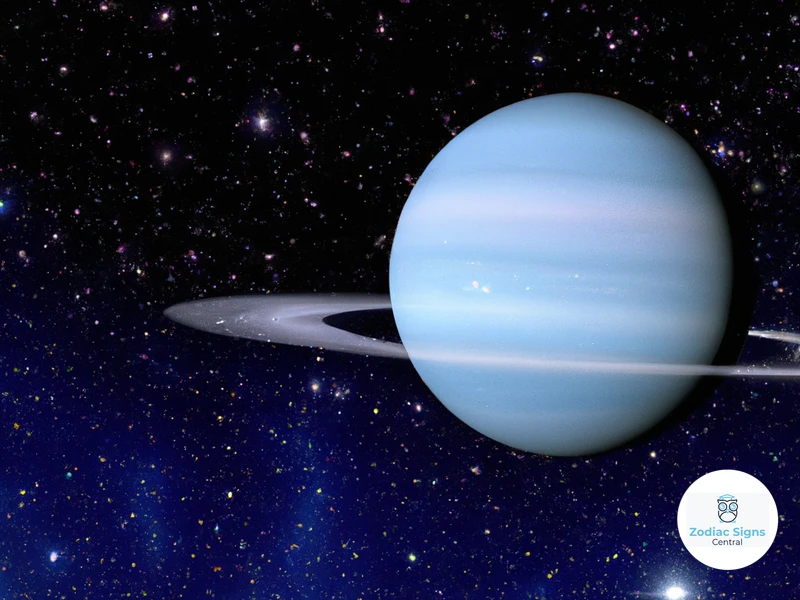
1. How was Uranus discovered?
Uranus was discovered by the British astronomer William Herschel on March 13, 1781. He observed this distant planet while surveying the night sky with a homemade telescope.
2. Why is Uranus referred to as the “sideways spinner”?
Uranus is known as the “sideways spinner” due to its unique rotation. Instead of spinning on its axis like a top, Uranus rotates on its side, with its poles oriented almost in the plane of its orbit.
3. How did Uranus get its name?
Uranus was named after the Greek sky deity Uranus, the father of Cronus (Saturn) and grandfather of Zeus (Jupiter). The name was proposed by astronomer Johann Bode.
4. What is Uranus’ atmosphere composed of?
Uranus’ atmosphere is primarily composed of hydrogen and helium, with traces of methane. The methane in its atmosphere gives Uranus its distinctive bluish-green color.
5. What is unique about Uranus’ magnetic field?
Uranus’ magnetic field is unique because it is tilted at an angle of about 60 degrees to its rotational axis. This is highly unusual compared to other planets in our solar system, whose magnetic fields are closely aligned with their rotational axes.
6. Are there any rings around Uranus?
Yes, Uranus has a system of rings made up of small rocks and dust. However, these rings are not as prominent or well-known as the rings of Saturn.
7. Has Uranus been explored by spacecraft?
Yes, Uranus has been visited by the Voyager 2 spacecraft, which flew by the planet in 1986. Voyager 2 provided valuable data and images of Uranus and its moons.
8. Is Uranus mentioned in astrology?
Yes, Uranus is considered one of the planets in astrology and is associated with innovation, rebellion, and sudden change. It is believed to influence individuality and a desire for independence.
9. What future missions are planned to explore Uranus?
There are proposals for future missions to Uranus, including an orbiter and probe mission. These missions would provide more detailed information about the planet’s composition, atmosphere, and magnetic field.
10. How far away is Uranus from Earth?
On average, Uranus is located about 1.8 billion miles (2.9 billion kilometers) away from Earth. The distance between the two planets varies as they orbit around the Sun.
References
- Uranus: the first planet discovered with a telescope
- William Herschel discovers Uranus
- William Herschel and the Discovery of the Planet Uranus
Frequently Asked Questions

1. How was Uranus named?
Uranus was named after the Greek god of the sky. It was chosen to follow the tradition of naming planets after mythological deities.
2. Why is Uranus known as the “sideways spinner”?
Uranus is called the “sideways spinner” because its axis of rotation is tilted at an extreme angle. While most planets rotate on an axis that is roughly perpendicular to their orbit, Uranus rotates on its side, giving it a distinct and unique appearance.
3. Can Uranus be seen without a telescope?
No, Uranus is not visible to the naked eye. It requires a telescope to observe because of its distance from Earth and its relatively faint appearance.
4. How long does it take Uranus to orbit the Sun?
Uranus takes approximately 84 Earth years to complete one orbit around the Sun. Its long orbit period is due to its substantial distance from the Sun.
5. Are there any missions planned to explore Uranus in the future?
Yes, there are plans for a Uranus Orbiter and Probe mission in the future. These missions aim to gather more detailed information about the planet and its atmosphere.
6. How many rings does Uranus have?
Uranus has a system of 13 known rings. These rings are made up of dust, rock, and ice particles, and they vary in size and composition.
7. Is Uranus visible from every location on Earth?
No, Uranus is not visible from every location on Earth at all times. Its visibility depends on various factors such as geographical location, time of year, and weather conditions.
8. Can humans live on Uranus?
No, humans cannot live on Uranus. The planet’s extreme cold temperatures, lack of a solid surface, and harsh atmospheric conditions make it inhospitable for human habitation.
9. Does Uranus have any moons?
Yes, Uranus has 27 known moons. The largest moons of Uranus are Titania, Oberon, Umbriel, Ariel, and Miranda. These moons were discovered through telescopic observations and space missions.
10. What is the significance of Uranus in astrology?
In astrology, Uranus is associated with ideas of rebellion, innovation, and change. It is believed to influence individuality, creativity, and unconventional thinking.
